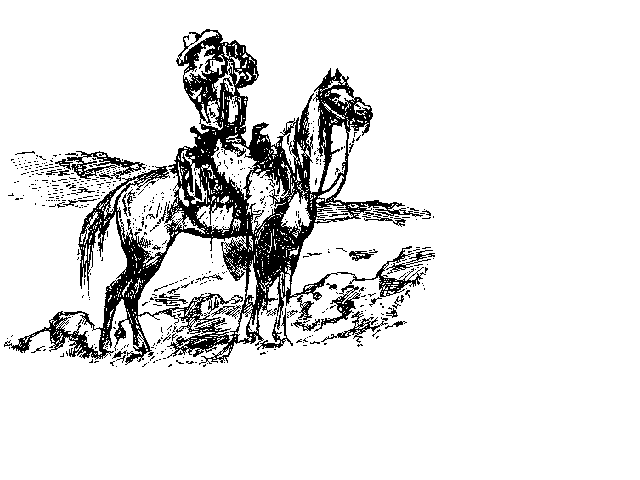R. L. Maddox

R. L. Maddox
Interviewed, January 23, 1938
R. L. Maddox was born in Grayson County, Texas April 12, 1867. He
came to Runnels County in 1881, and settled at Runnels City. He also worked
in Menard County. In 1889 he came back to Runnels County, married, and
went to work as foreman on the Loomis ranch not far from Ballinger.
"I began riding and working cattle," Mr. Maddox says, "when just
a lad. Jim Johnson was my first wagon boss. I had heard so many stories
concerning Indians and buffalo in the West that I expected to see them
roaming the prairies in large numbers. I later learned that the last band
of Indians to pass
though this section was in 1876, and the last buffalo was killed
on Fuzzy Creek in 1878. About the only wild things left were coyotes, antelope,
prairie chickens and prairie dogs. But they were plentiful.
"When I first came to Runnels, the Chisholm Trail passed a few miles
east of Ballinger. Here or over this trail large herds of cattle were driven
from points south, to northern markets. They kept moving the route west
until they'd pass near where Ballinger now is and right by Runnels City,
and on by the way of Cedar Gap and Abilene.
"I have watched, fascinated by them when a boy, many large herds
driven by our home. The biggest round-up that ever took place in Runnels
County happened in 1882 on this trail. I have seen many stampedes and
helped to corral many herds of restless dogies, but this was the worst,
the one that
precipitated the big round-up. There were three or four large trail
herds camped at this particular time, at different places along the trail
over a distance of about fifteen miles, mainly on Fuzzy Creek. A very severe
thunderstorm came up in the night and frightened the herds and threw them
into a panic. They say there was a great hullabaloo as cowboys rode, yelled
and sang to try to hold their herds together. It finally got
so nobody knew whose cattle they were chasing and they had to let
'em go. They went wild and scattered and mixed. Some wandered as far as
fifteen miles from the starting place. It took several days for the trail
men, with some help, to cut their brands and get the herds together again.
It was estimated that there were 4,000 head in the round-up.
"I remember how the boys used to play practical jokes on the green
hands. They'd get pretty rough sometimes, too. One of their favorite jokes
was to grab a set of work harness, drag them through the camp at night,
yelling, 'Whoa! Whoa! Stop 'em!' The tenderfoot would jump out of bed,
of course,
getting very much excited. Then how the other boys would laugh at
him. I knew one old boy that didn't let anything bother him, he wasn't
afraid of anything that was connected with cow work, until it lightened.
He simply would not leave the house or gang if a cloud was brewing.
"Dances were the chief place of amusement for us in the early days.
I remember attending a dance near Paint Rock once. When I got there, there
were five fiddlers present and no fiddle. I rode fifteen miles and brought
back a fiddle. It was nearly midnight before we got started to dancing.
The girls all
wanted to go home about three o'clock, so we went out and turned
their horses loose and danced until after breakfast. Sometimes, and this
was one of them, when we were short of girls and wanted to dance a square,
some of us boys would tie a bandanna around our head or arm and take the
place of the Miss.
"The best bronc rider I ever knew was Booger Red, a familiar
character in those days. Every cowboy had to be a good rider and many of
them were busters.
"I knew one cowman, Fog Coffee, a son of an old Indian fighter who
was very fond of playing practical jokes, and he would take a drink now
and then, too. And you couldn't hardly get back at him at all, not even
if he was drinking. I remember one time he came to Ballinger and got on
a whiz. He was raising a right smart of trouble when the sheriff arrested
him and undertook to take him to jail. Fog was on his horse and Sheriff
Farmwalt was holding the reins, and going in the direction of the jail.
Fog suddenly had a bright idea. He very quietly slipped the bridle off
his horse's head and beat it for home, leaving the much surprised officer
holding the bridle." I worked as foreman on the Loomis ranch
until 1917, then I moved to Ballinger and have worked as a
salesman ever since. I traveled many years for a firm in Chicago. I am now
employee for Kirk & Mack Hardware Co. of Ballinger.
Biography Index
Susan Hawkins
© 2024
If you find any of Grayson
County TXGenWeb
links inoperable,
please
send me a message.
|

